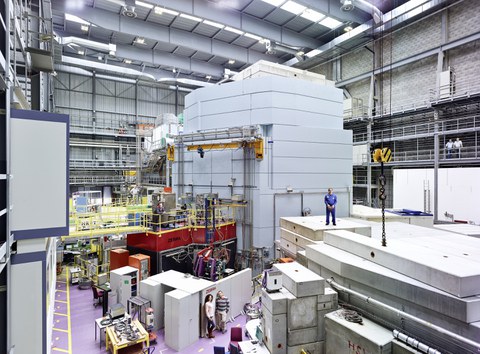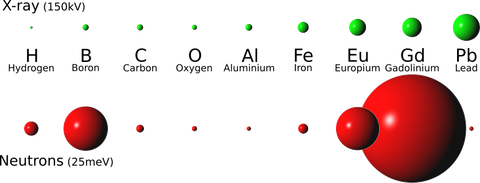Neutron Radiography
Project leader: Dr.-Ing. Sascha Heitkam
Duration: 05/2020 – 04/2023
Funding: DFG / Emmy-Noether
Project description
For neutron radiography we use the beamline NEUTRA of the neutron source SINQ (The Swiss Spallation Neutron Source) at the Paul Scherrer Institut in Switzerland.
Neutron radiography works in principle like classical radiography. The foam sample is irradiated and a detector screen behind the sample images the transmitted intensity. The attenuation of the radiation is a measure of the material density in the sample. In contrast to X-rays, however, neutrons are attenuated much more strongly by water (i.e. hydrogen). This means that aqueous structures can be quantified with high contrast even at high temporal resolutions. Gadolinium attenuates neutrons extremely strongly, which means that gadolinium particles as small as 50 μm can be tracked.
Using neutron radiography, we investigate transient, multidimensional drainage in foams. In particular, we try to measure effects such as anisotropic drainage or dilatancy in sheared foams. Furthermore, we can analyse the movement of particles in the foam structure.
Publications
Heitkam, S., Rudolph, M., Lappan, T., Sarma, M., Eckert, S., Trtik, P., ... & Eckert, K. (2018). Neutron imaging of froth structure and particle motion. Minerals Engineering, 119, 126-129. DOI:10.1016/j.mineng.2018.01.021
Heitkam, S., Lappan, T., Eckert, S., Trtik, P., & Eckert, K. (2019). Tracking of particles in froth using neutron imaging. Chemie Ingenieur Technik, 91(7), 1001-1007. DOI:10.1002/cite.201800127



